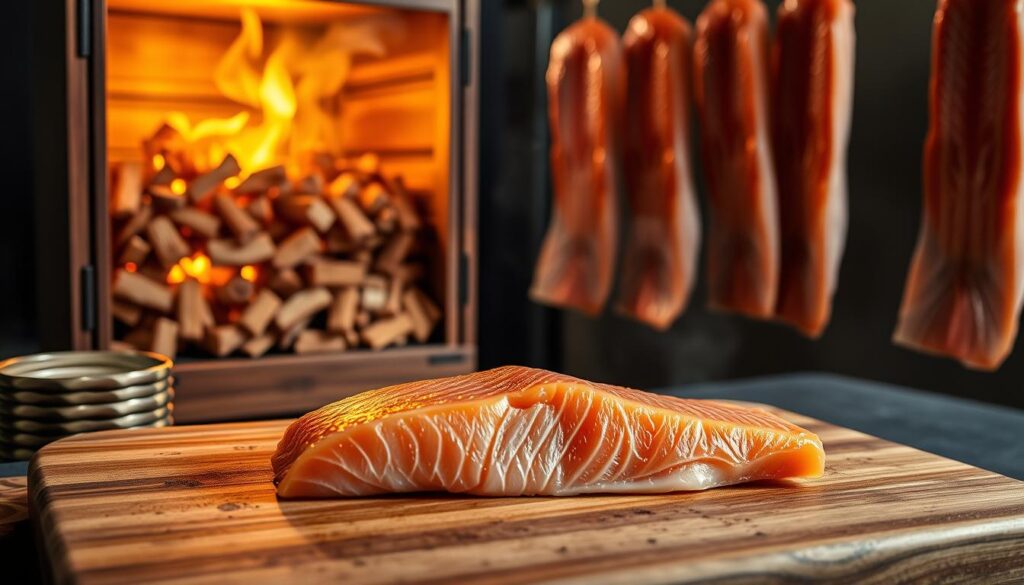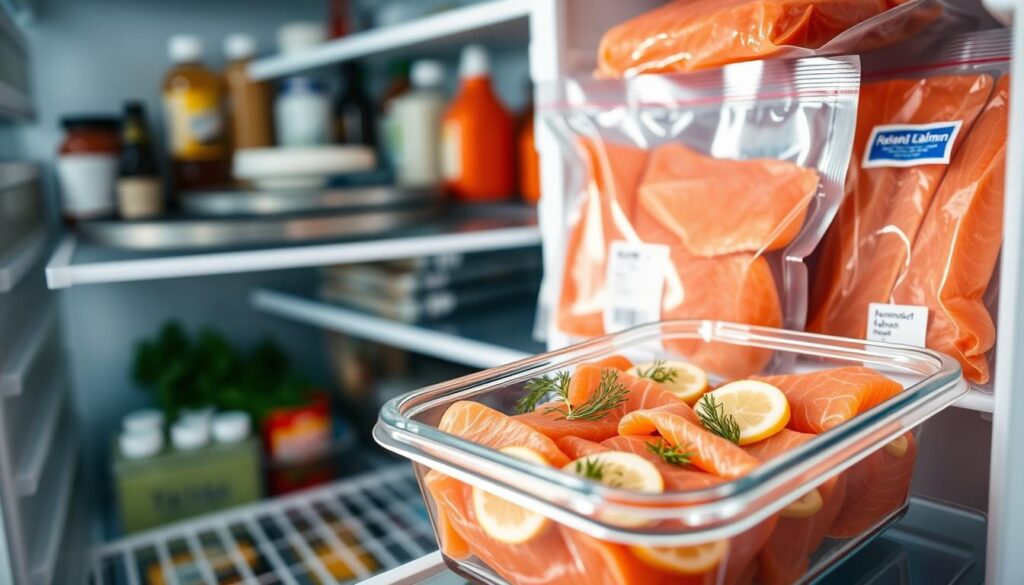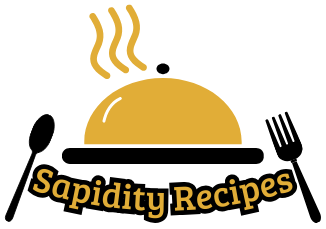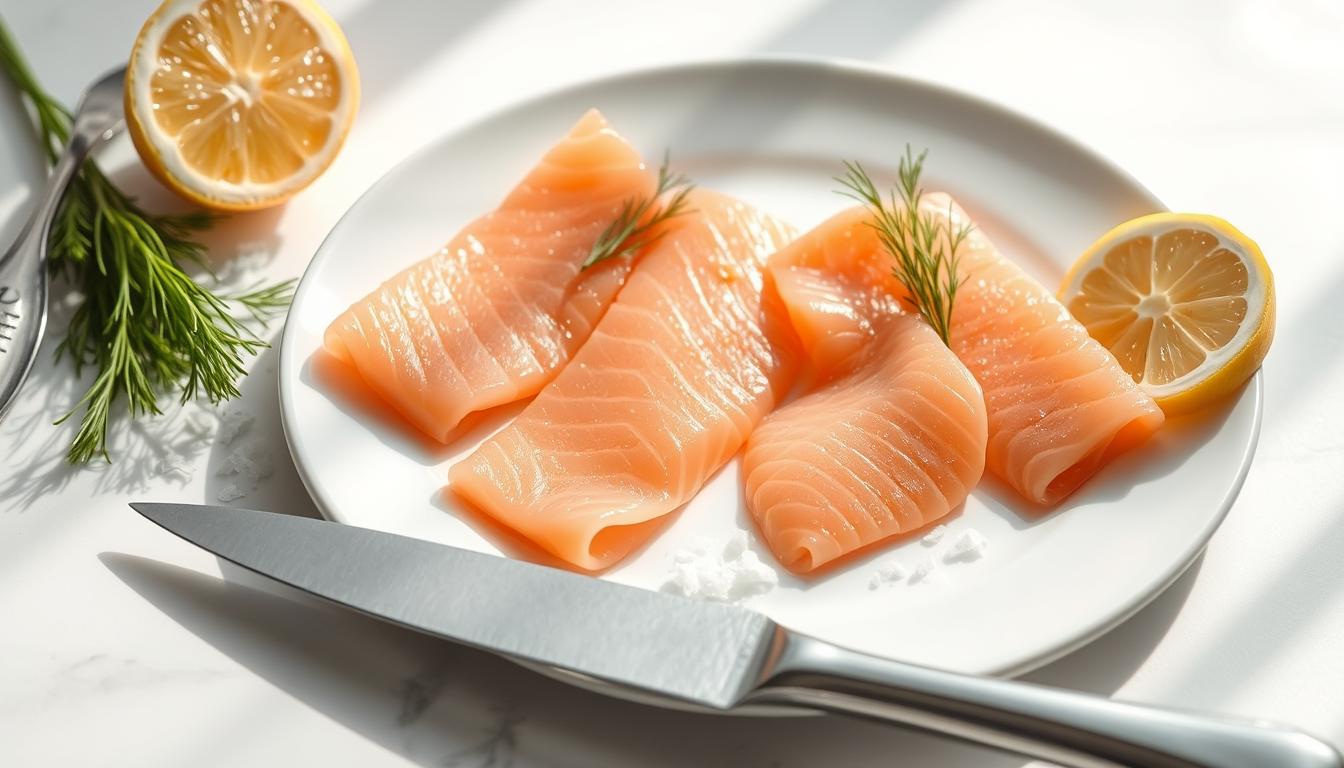How to Make cold smoked salmon: A Complete Guide
The first time I tasted homemade cold smoked salmon, it was magical. It felt like uncovering a time-honored secret handed down through the ages. My grandmother’s kitchen was filled with a distinct aroma that made every meal unforgettable.
Mastering the craft of smoked salmon went beyond just acquiring a skill — it was a way to preserve a cherished family tradition. Cold-smoking salmon is a refined process that transforms fresh fish into an indulgent delicacy.
When you learn the cold smoked salmon process, you open a world of flavors. It makes simple ingredients taste like gourmet dishes. Whether you’re passionate about cooking at home or a true food lover, this skill is sure to impress your loved ones.
In this guide, you’ll discover how to prepare smoked salmon like an expert. We’ll cover everything from picking the right fish to mastering smoking techniques. You’ll make delicious cold smoked salmon that’s as good as any restaurant’s.
Start your culinary adventure today. It’s a journey filled with tradition, skill, and amazing flavors. Your journey to making smoked salmon begins now.
Table of Contents
Understanding Cold Smoked Salmon and Its Process
Exploring smoked salmon means learning about the special techniques that turn fresh fish into a gourmet treat. Cold smoking is a unique way to preserve salmon, making its natural flavors even better.
Cold smoking salmon is a delicate art that’s different from regular cooking. It uses low temperatures to create a special texture and flavor that seafood lovers adore.
What Defines Cold Smoked Salmon?
Cold smoked salmon is made by curing fish and smoking it at temperatures below 50 degrees Fahrenheit. When you smoke salmon at home, remember these important points:
- Temperature range between 70-90°F
- Extended curing time (24-48 hours)
- Smoke exposure lasting up to 12 hours
- Soft, silky texture preservation
Cold vs. Hot Smoking: Understanding the Difference
The main difference between cold and hot smoking is temperature and cooking method. Hot smoking prepares the fish by cooking it at elevated temperatures.
Benefits of Cold Smoking Fish
Smoking salmon at home with cold smoking has many benefits:
- Enhanced flavor complexity
- Longer shelf life
- Preservation of delicate salmon texture
- Ability to experiment with wood chip flavors
Mastering the smoked salmon recipe through cold smoking takes patience and precision. Each step is crucial in creating a gourmet delicacy that turns ordinary salmon into a special culinary experience.
Selecting the Right Salmon for Smoking
Choosing the perfect salmon is key to making the best smoked salmon at home. Not all salmon varieties are equally suited for smoking. Knowing the differences can make your homemade smoked salmon truly stand out.
The quality of your salmon greatly affects the final taste. Both professional chefs and home cooks agree. Picking the right fish is the first step to making delicious smoked salmon.
Types of Salmon for Smoking
For homemade smoked salmon, some salmon types are better than others:
- King Salmon (Chinook): It has the highest fat content, perfect for smoking
- Atlantic Salmon: It has a consistent texture and rich flavor
- Steelhead: A fantastic substitute that shares many of the same qualities as salmon.
Freshness and Quality Indicators
For the finest smoked salmon, watch for these quality indicators:
- Bright, clear eyes
- Firm, elastic flesh
- Fresh, mild ocean smell
- No discoloration or browning
Sustainability Considerations
When picking salmon, think about the environment. Seek out certifications such as those from the Marine Stewardship Council (MSC). Or choose wild-caught Alaskan salmon for sustainable fishing.
Expert tip: Freeze your salmon at -4°F (-20°C) for a minimum of 7 days to remove any potential parasites before smoking.
Essential Ingredients for Homemade Smoked Salmon
Making delicious smoked salmon begins with knowing the key ingredients. These ingredients turn fresh fish into a tasty treat. Choosing the right curing components is key to enhancing flavor and texture.
The base of a great smoked salmon brine recipe is high-quality ingredients. These ingredients work together to cure and flavor the fish perfectly.
The Critical Role of Salt in Curing
Salt is vital in the smoking process. For your smoked salmon brine, consider these salt tips:
- For optimal results, use kosher salt or sea salt.
- Avoid iodized table salt, as it can make flavors bitter
- Aim for roughly 12% salt based on the weight of the fish.
Selecting the Perfect Sugars and Spices
Adding the right sugars and spices boosts your smoked salmon. Brown sugar is a popular choice, bringing richness and harmony to the flavor.
Here are some sugar and spice combos to try:
- Brown sugar with black pepper
- Maple sugar with dill
- Coconut sugar with cayenne for a spicy twist
Optional Flavor Enhancements
Try adding extra ingredients for unique flavors in your smoked salmon. Consider these options:
- Crushed garlic
- Fresh herbs like thyme or rosemary
- Citrus zest for a bright note
- Whiskey or bourbon for extra depth
You can tailor your smoked salmon brine to suit your personal taste. Each batch can be a new culinary adventure.
The Curing Process of Salmon
Turning fresh salmon into a tasty treat needs a good cold smoked salmon process. Curing is the first step. It makes the fish flavorful and keeps its texture.
The curing process is essential for a delicious smoked salmon recipe. Mastering the correct techniques is essential for achieving success.
Preparing Salmon for the Curing Process
Start by picking high-quality salmon and getting it ready:
- Remove pin bones using tweezers
- Pat the salmon dry with paper towels
- Trim any uneven edges for consistent curing
- Select fresh, sushi-grade salmon for best results
Exploring Curing Techniques
There are two main curing methods for delicious smoked salmon:
- Dry Curing: Coating salmon with salt, sugar, and spices
- Wet Brining: Submerging salmon in seasoned saltwater solution
“Achieving perfect smoked salmon comes down to careful, patient curing.” – Culinary Experts
Recommended Curing Timeframes
The curing time affects flavor and texture. Salmon usually needs:
- 24-48 hours for thin fillets
- 48-72 hours for thicker cuts
- Refrigerate during entire curing process
Watching your salmon closely during curing is important. It ensures your dish is both safe and flavorful, satisfying any seafood enthusiast.
Setting Up Your Smoking Equipment
Smoking salmon at home needs careful preparation and the right tools. Choosing the right smoking method is key. The proper setup transforms ordinary fish into a delicious delicacy.
Choosing Your Smoking Method
When smoking salmon at home, you have two main options:
- Electric Smokers: Precise temperature control
- Traditional Wood Chip Methods: Authentic smoky flavor
Preparing Your Smoker
Good smoked salmon starts with a well-prepared smoker. For cold smoking, keep temperatures below 90°F. Your equipment must keep the heat low and steady without cooking the fish.
Safety Considerations
When smoking salmon at home, safety is crucial:
- Ensure good ventilation
- Use food-safe thermometers
- Keep smoking surfaces clean
- Watch the temperature closely
By following these tips, you’ll make delicious smoked salmon safely and in control.
The Cold Smoking Technique Explained
Learning to make cold smoked salmon is all about precision and technique. This method turns fresh salmon into a delicious treat with deep smoky flavors. It keeps the salmon’s soft texture while adding a strong smoky taste.

To make smoked salmon, knowing the basics is key. Cold smoking needs very low temperatures and careful smoke control.
Best Methods for Cold Smoking Salmon
- Select high-quality, fresh salmon from sustainable sources
- Ensure salmon is completely dry before smoking
- Use wood chips that complement salmon’s delicate flavor
- Maintain consistent airflow during smoking
Maintaining Ideal Temperatures
Keeping the right temperature is vital in cold smoking salmon. The ideal temperature is below 50°F. This prevents bacteria growth and allows the smoke to penetrate.
| Temperature Range | Smoking Duration | Flavor Intensity |
|---|---|---|
| 35-45°F | 6-12 hours | Light, delicate smoke |
| 45-50°F | 12-24 hours | Robust, intense smoke |
How Long Should You Smoke Your Salmon?
The smoking time affects the flavor. Shorter times give milder tastes, while longer times make the flavors stronger. Most people find 12 hours is perfect for a good balance of taste and texture.
Experts say to watch your salmon closely while smoking. Look for a firm texture and a clear, rich look. This means your salmon is smoked just right.
Checking for Doneness in Smoked Salmon
Making the best smoked salmon needs attention to detail. Knowing when it’s done is key. This ensures a delicious seafood dish that will wow everyone.
Signs of Properly Smoked Salmon
Figuring out if smoked salmon is perfect involves several checks. Your fish should look and feel just right:
- A deep, rich pink to orange color
- Firm yet tender texture
- Smooth, glistening surface
- No visible moisture or excess liquid
Understanding the Texture and Color
When checking your smoked salmon, look at its appearance and feel. It should be firm but not hard. The color should be even, not too bright or fake.
Tips for Testing Before Serving
Before serving your smoked salmon, do these quick tests:
- Lightly press the salmon – it should bounce back just a little.
- Check for a uniform pink-orange hue
- Inspect for any signs of excessive dryness or mushiness
- Smell the salmon – it should have a clean, subtle smoky aroma
Follow these tips to serve smoked salmon that impresses everyone.
Storing and Preserving Smoked Salmon
After making your tasty smoked salmon, it’s important to store it right. This keeps its flavor and quality. By storing it well, you can enjoy it for many weeks.

Storing smoked salmon needs careful attention to temperature and packaging. It must be kept in the right conditions to keep its delicate taste and texture.
Refrigeration Guidelines
Here are some tips for storing smoked salmon in the fridge:
- Use airtight containers to prevent moisture loss
- Keep temperature consistently below 40°F
- Wrap salmon tightly in plastic wrap or wax paper
- Store in the coldest part of your refrigerator
Shelf Life Expectations
Knowing how long your smoked salmon lasts is key. It helps avoid waste and keeps it safe to eat. Generally, homemade smoked salmon can last:
| Storage Method | Duration |
|---|---|
| Refrigerated | 2-3 weeks |
| Frozen | Up to 4 months |
Freezing Your Smoked Salmon
Freezing is a great way to keep your smoked salmon for a long time. Here’s how to do it:
- Layer salmon between parchment paper
- Use airtight, freezer-safe containers
- Remove as much air as possible
- Label with date of freezing
- Thaw in refrigerator when ready to consume
Using the right storage methods keeps your smoked salmon tasting great. You can enjoy it for weeks after you make it.
Creative Ways to Use Smoked Salmon in Recipes
Turning your homemade smoked salmon into tasty dishes opens up a world of possibilities. Whether you’ve mastered your smoked salmon recipe or seek the best ways to serve it, these ideas will boost your cooking skills.
Classic Dishes That Shine with Smoked Salmon
The bagel with lox is a timeless favorite. To make this classic dish, layer thin slices of your homemade salmon on a toasted bagel with:
- Cream cheese
- Thinly sliced red onions
- Capers
- Fresh dill
Appetizers and Spreads to Impress
Smoked salmon makes elegant appetizers that will impress your guests. Try these simple yet sophisticated options:
- Smoked Salmon Tartare: Finely chop your salmon and mix with herbs
- Salmon mousse spread on crispy crostini
- Cucumber rounds topped with salmon and dill
Salads and Pastas: A Gourmet Touch
Add your best smoked salmon to light, refreshing dishes. Pasta and salad recipes become instantly elevated with these protein-packed additions:
- Cold pasta salad with smoked salmon chunks
- Mixed green salad with salmon strips
- Creamy fettuccine with salmon pieces
“Smoked salmon isn’t just a topping—it’s a culinary canvas waiting to be explored!” – Culinary Expert
Try these ideas to make your homemade smoked salmon into restaurant-quality meals. They will impress family and friends.
Frequently Asked Questions About Smoked Salmon
Many home cooks wonder about making smoked salmon at home. They ask about preparation, safety, and nutrition. Your journey into making homemade smoked salmon might raise questions about its unique traits and health benefits.
Cold-smoked salmon remains partially raw throughout the processing. The low-temperature smoking method keeps its delicate texture and adds a special flavor. When making homemade smoked salmon, it’s important to follow food safety rules to avoid bacterial risks.
It’s possible to make tasty smoked salmon without the need for specialized equipment. Using a conventional oven with wood chips or liquid smoke can get you close to professional results. You don’t need a professional smoker to make gourmet-quality seafood at home.
Salmon is very nutritious. It’s full of omega-3 fatty acids, which are good for your brain, reduce inflammation, and give you important nutrients like selenium, phosphorous, and vitamin B12. Enjoy your homemade smoked salmon, but remember to eat it in moderation because of its sodium content.
Always choose high-quality salmon from trusted suppliers. Follow the right curing and smoking methods to make sure it’s safe and tasty to eat.
Did you like this recipe? Your opinion matters to us.
There are no reviews yet. Be the first one to write one.

